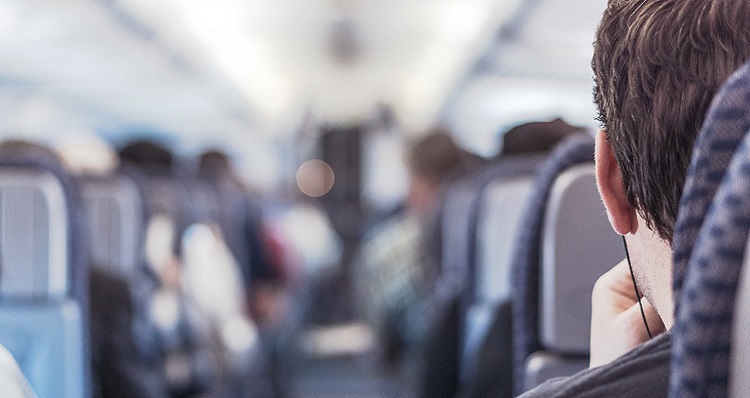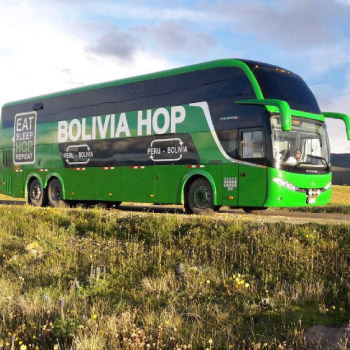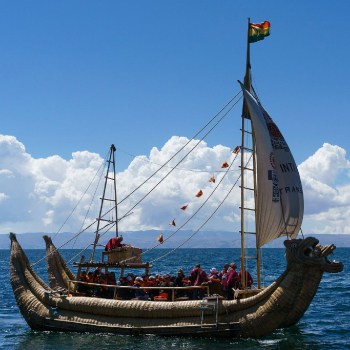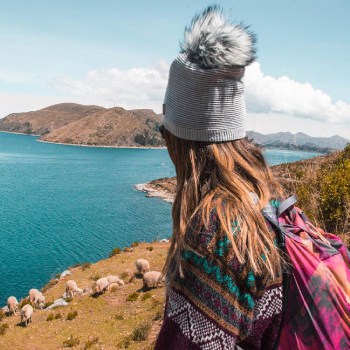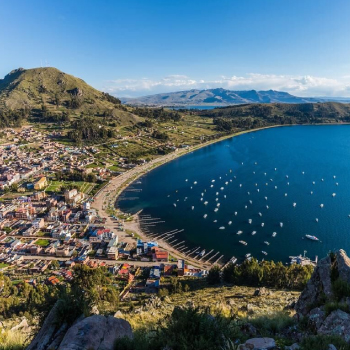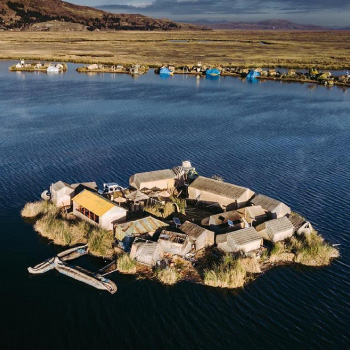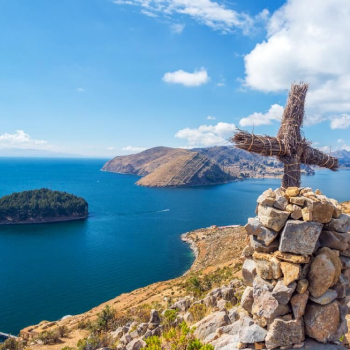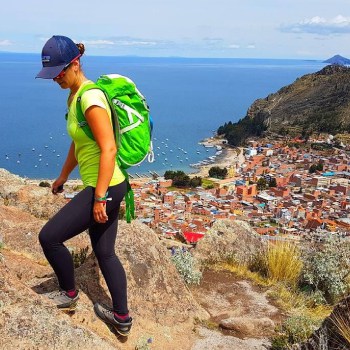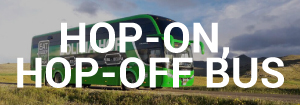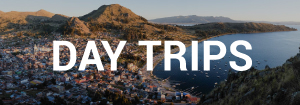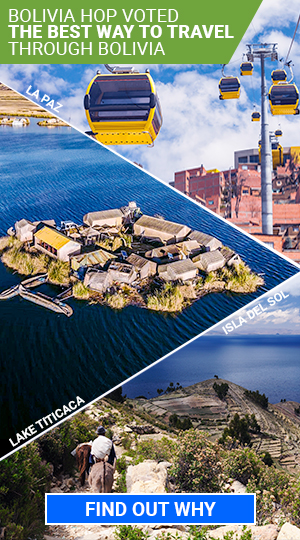An adventure in itself, navigating Bolivia’s rugged topography can leave even professional travelers reeling.
Public transport throughout the country, while generally safe, can be tricky and unreliable, not to mention eventful. Because timetables in Bolivia aren’t available online and many bus terminal staff don’t speak English, acquiring information on how to reach your next destination can be difficult. Departure and arrival times change without notice and ticket prices don’t always reflect quality.
Also, many of Bolivia’s roads are still unpaved, making traveling between cities, long, tumultuous and bumpy. It’s not unusual for ground transportation to be delayed by protests leaving travelers stranded for days on end. The unpredictable rainy season can also impact the best-laid travel plans, especially in the eastern plains of Bolivia where roads are known to get washed out.
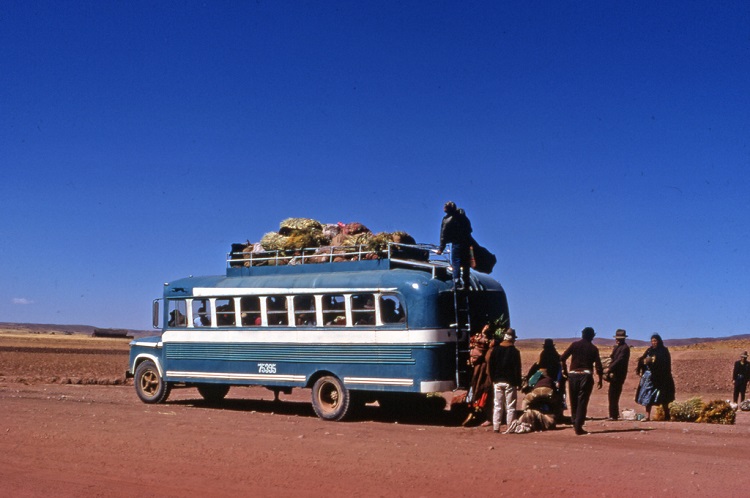 Despite these inconveniences, there are many positives to traveling by local transportation in Bolivia. Firstly, travel is incredibly cheap and unlike most western countries, taking a taxi is a completely affordable option. Secondly, taking the bus is a great way to experience Bolivia’s unique landscapes. Being forced to sit back and soak in awe-inspiring views for hours on end is a true blessing in disguise. Finally, traveling by public transport allows you to experience the friendliness of the Bolivian people. It’s very common for locals to smile and say “buen dia” when boarding the bus; a refreshing custom in a manic world.
As you can see, taking public transport in Bolivia certainly has its challenges, however if you plan in advance, keep an open mind, and maintain a flexible travel schedule, there’s no reason why traveling through the heart of South America can’t be both memorable and enjoyable.
Below we outline the main modes of transport within Bolivia as well as the safest and most efficient ways to travel between destinations:
Despite these inconveniences, there are many positives to traveling by local transportation in Bolivia. Firstly, travel is incredibly cheap and unlike most western countries, taking a taxi is a completely affordable option. Secondly, taking the bus is a great way to experience Bolivia’s unique landscapes. Being forced to sit back and soak in awe-inspiring views for hours on end is a true blessing in disguise. Finally, traveling by public transport allows you to experience the friendliness of the Bolivian people. It’s very common for locals to smile and say “buen dia” when boarding the bus; a refreshing custom in a manic world.
As you can see, taking public transport in Bolivia certainly has its challenges, however if you plan in advance, keep an open mind, and maintain a flexible travel schedule, there’s no reason why traveling through the heart of South America can’t be both memorable and enjoyable.
Below we outline the main modes of transport within Bolivia as well as the safest and most efficient ways to travel between destinations:
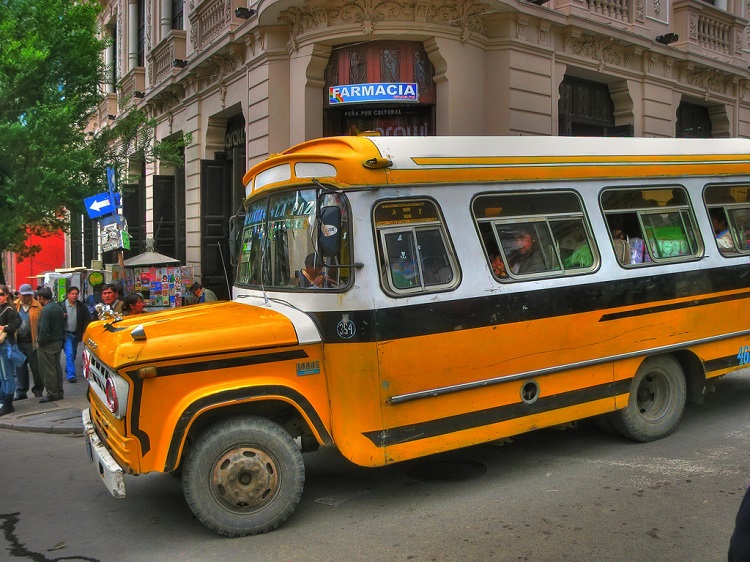
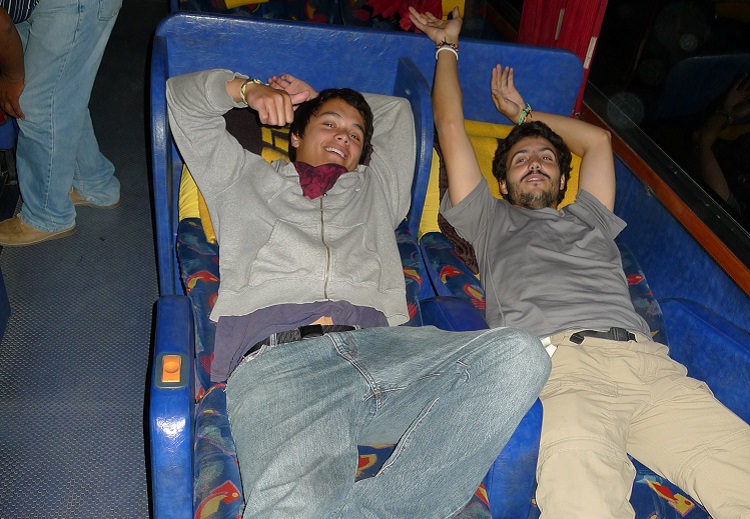 Regardless of which seat-type you pay for, no meals are provided on Bolivian bus services and there are no dedicated food stops during the trip. That being said, passengers are welcome to bring their own snacks and drinks on board, and whenever the bus does make a stop, local vendors come onto the bus with hot meals for passengers to buy.
Buses servicing the longer routes will usually have a toilet on board. However, it’s common for the driver to keep the toilet locked during the entire trip so they don’t have to clean it at the end of their shift. If you do need to use the bathroom, the driver may pull over to the side of the road and drive along slowly while you take care of your business outside. If you really must use the buses toilet, kick up enough fuss and the driver will more than likely hand over the keys. The only other option is to wait until you arrive at the next bus terminal where you can use the toilet for a couple of bolivianos.
Regardless of which seat-type you pay for, no meals are provided on Bolivian bus services and there are no dedicated food stops during the trip. That being said, passengers are welcome to bring their own snacks and drinks on board, and whenever the bus does make a stop, local vendors come onto the bus with hot meals for passengers to buy.
Buses servicing the longer routes will usually have a toilet on board. However, it’s common for the driver to keep the toilet locked during the entire trip so they don’t have to clean it at the end of their shift. If you do need to use the bathroom, the driver may pull over to the side of the road and drive along slowly while you take care of your business outside. If you really must use the buses toilet, kick up enough fuss and the driver will more than likely hand over the keys. The only other option is to wait until you arrive at the next bus terminal where you can use the toilet for a couple of bolivianos.
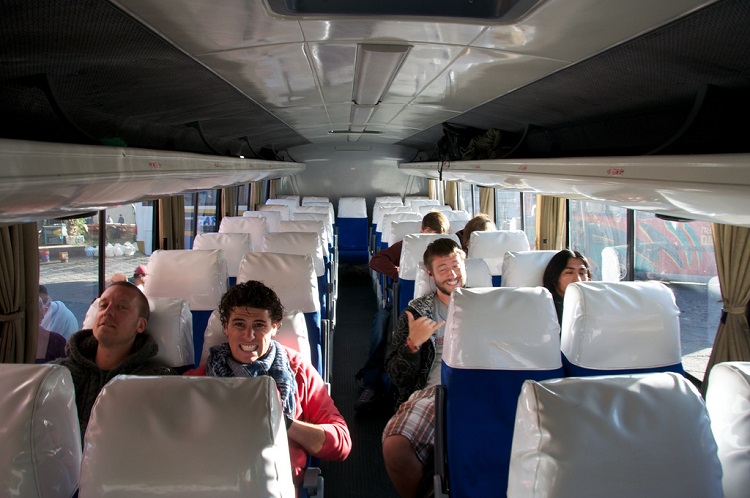 Movies are shown throughout the day and night, so if you plan on getting some sleep, we recommend bringing earplugs and an eye mask. Also, it’s common for the air-con to be blasting out cold air throughout the entire trip, so make sure to bring something warm to wear or cover yourself with. All buses are strictly nonsmoking.
No fees are charged for luggage on public buses, though some companies do require passengers only bring one bag under 30 kg. Bags are stored under the bus or in the lower rear section of double-decker buses. On most occasions you will be given a ticket labeling your luggage which you will need to give to the baggage handler at the end of the trip to collect your bags.
Movies are shown throughout the day and night, so if you plan on getting some sleep, we recommend bringing earplugs and an eye mask. Also, it’s common for the air-con to be blasting out cold air throughout the entire trip, so make sure to bring something warm to wear or cover yourself with. All buses are strictly nonsmoking.
No fees are charged for luggage on public buses, though some companies do require passengers only bring one bag under 30 kg. Bags are stored under the bus or in the lower rear section of double-decker buses. On most occasions you will be given a ticket labeling your luggage which you will need to give to the baggage handler at the end of the trip to collect your bags.
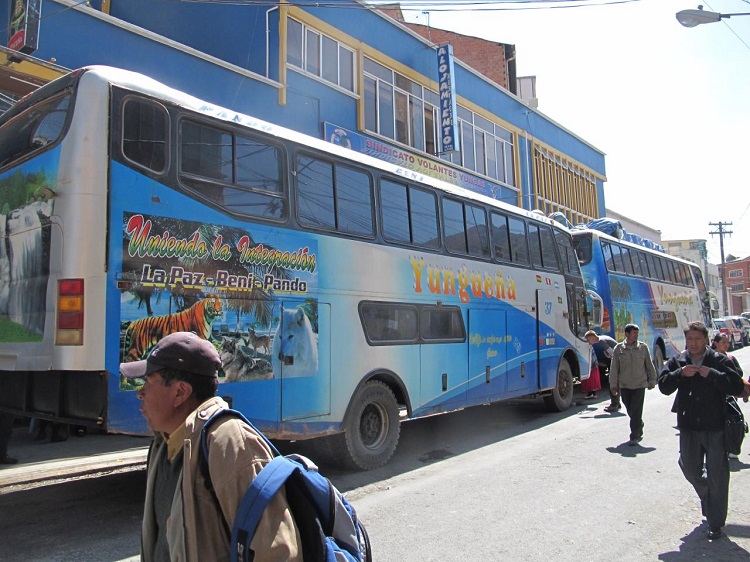 Bus Terminals
In Bolivia, all the bus companies typically use a common bus terminal (“terminal de pasajeros”). In bigger cities however there may be several terminals handling transport to different parts of the country. The main thing to be aware of is that passengers traveling by bus must pay a “departure tax” (about Bs 2) a fact which isn’t very well advertised. You can pay this fee at the terminal – look for a sign saying “boletas”. You’ll be given a ticket which is checked once you’re on the bus (and possibly already starting to pull away).
The following is a table of the major international and interdepartmental bus terminals located throughout Bolivia:
Bus Terminals
In Bolivia, all the bus companies typically use a common bus terminal (“terminal de pasajeros”). In bigger cities however there may be several terminals handling transport to different parts of the country. The main thing to be aware of is that passengers traveling by bus must pay a “departure tax” (about Bs 2) a fact which isn’t very well advertised. You can pay this fee at the terminal – look for a sign saying “boletas”. You’ll be given a ticket which is checked once you’re on the bus (and possibly already starting to pull away).
The following is a table of the major international and interdepartmental bus terminals located throughout Bolivia:
Ticket Prices and Reservations
Several private bus companies service the same routes with prices usually reflecting the quality of the bus and the level of service provided. However, this is not always the case, and some bus companies are known to list the same price as their competitors, regardless of the condition of their buses. Before booking a long day or overnight bus trip it’s worth jumping online and checking out the latest reviews of the provider you’re thinking of traveling with.

Photo Credit: Aquistbe

Photo Credit: Daniel Peppes Gauer
Buses
The most common way to travel in Bolivia is via the country’s extensive bus network. Reasonably frequent and generally reliable, buses run everywhere throughout the country’s major towns and cities. Long Bus Journeys Longer journeys are typically serviced by large double-decker buses called “Flotas” which tend to be newer and more comfortable than city buses. Referred to as “cama” (bed in Spanish), these types of buses hold up to 80 passangers and are equipped with reclining seats allowing comfortable travel during long-distance and overnight journeys. Passengers can choose from the following seat types:- Cama Premium – the most expensive option offering fully reclining seats (180-degree angle between the seat cushion and backrest)
- Cama – mid range price offering 160-degree reclining seats with decent leg room
- Semi-Cama – cheapest option offering 140-degree reclining seats with reasonable leg room

Photo Credit: Romain Lefort

Photo Credit: Tim Whitlow

Photo Credit: Los viajes del Cangrejo
| Location | Address | Phone Number |
|---|---|---|
| La Paz | Calle Uruguay - Plaza Antofagasta | (591-2) 228-0551 |
| Oruro | Calle Vacovic and Villarroel | (591-2) 527-9535 |
| Potosi | Avenue Universitaria | (591-2) 624-3361 |
| Cochabamba | Corner of Avenue Ayacucho and Tarata | (591-4) 423-4600 |
| Chuquisaca | Calle Ostira Gutierrez | (591-4) 644-1292 |
| Pando | Avenue 9 de Febrero | (591-2) 842-3122 |
| Beni | Calle Beni and Monasterio | (591-3) 462-4607 |
| Santa Cruz | Avenue Montes and 3 Pasos al Frente | (591-3) 348-8482 |
| Tarija | Corner of Avenue Victor Paz and Calle La Paz | (591-4) 663-6508 |
| Yacuiba | Calle Martin Barroso | (591-4) 682-4794 |
Bolivian Life Quick Tip:
As voted the best way to travel around Bolivia and Peru, we highly recommend choosing Bolivia Hop as your means of transport. Their service priorities traveler safety giving you peace of mind for your entire trip!
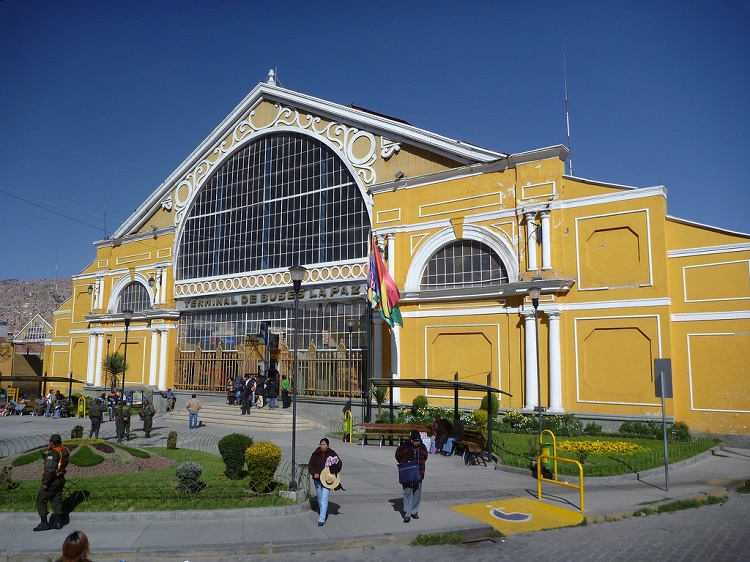
Photo Credit: Benjamin Dumas
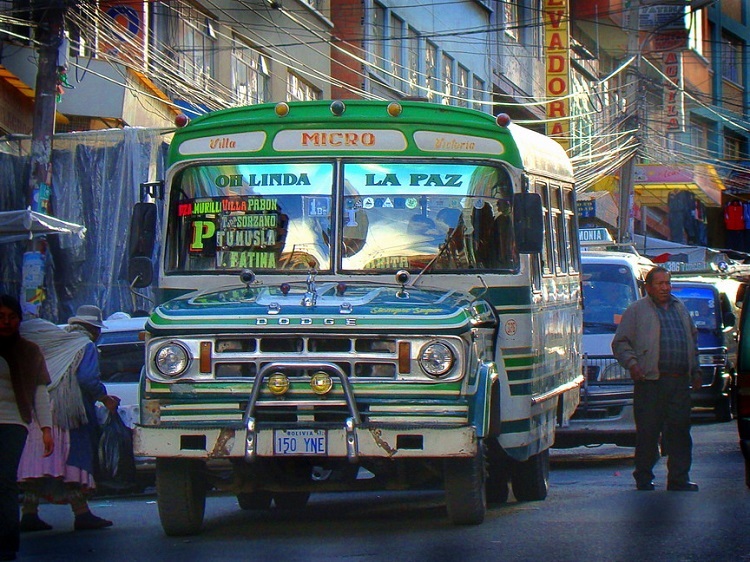
Photo Credit: Gatol fotografia
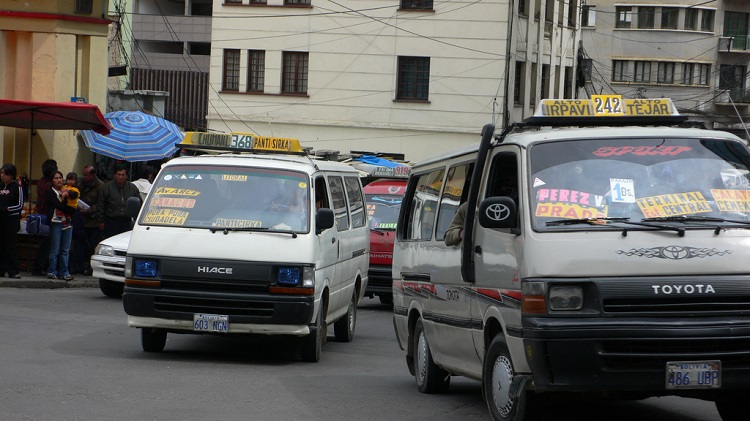
Photo Credit: Grace A
Taxis
Taxis are the safest mode of transport in Bolivia and can usually be called upon anytime and anywhere. There are two types of official taxis available in major cities: Radio taxis are dispatched based on calls they receive from private clients, usually hotels or restaurants. They drive to where passengers are located and take them directly to their destination. This is the safer, albeit more expensive option costing around Bs 6 ($0.90) to Bs 40 ($6 US) depending on distance and number of people sharing the taxi. You can identify radio taxis by their roof bubbles which advertise their logo, telephone number and name of the company. Regular taxis drive all over the city picking up people on the side of the street, costing around Bs 4 ($0.60 US) per person for a one way trip.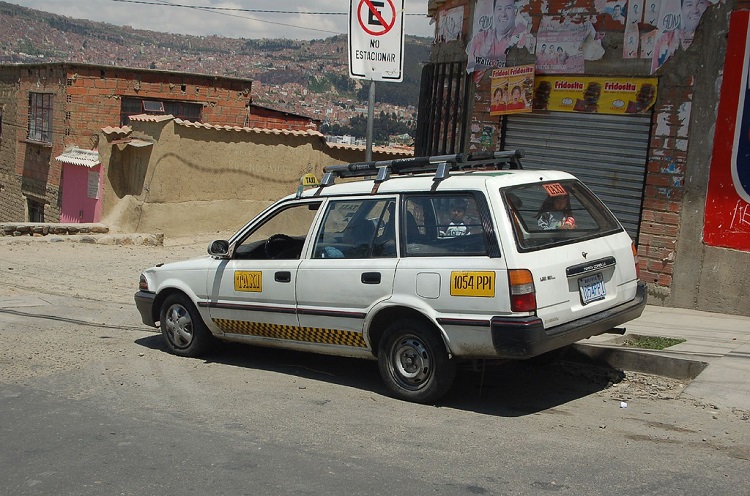
Photo Credit: Marv Gillibrand
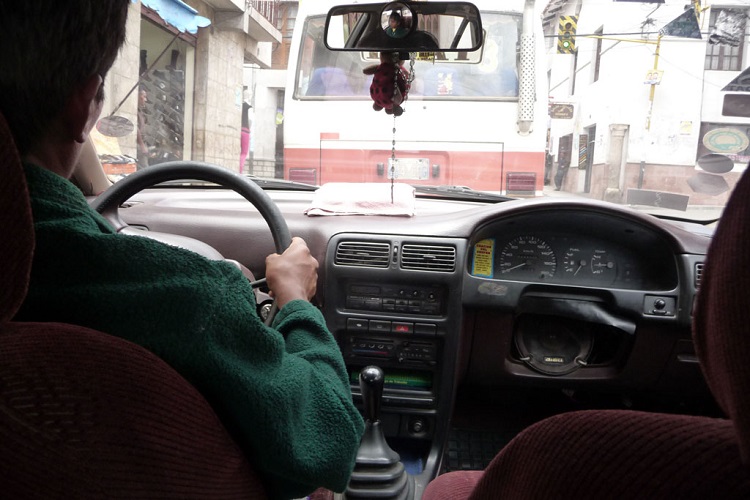 Taxi fares in Bolivia are usually fixed, however because few taxis are equipped with meters, you’ll need to settle on a price before driving to your destination. Fares are charged per passenger, so it’s not unusual to share a ride with strangers heading in the same direction. Often drivers will not have exact change for notes such as Bs 100, so try to carry change with you when traveling by taxi.
It’s not a requirement to tip taxi drivers in Bolivia. However, if you are happy with your driver or he has gone to extra effort for you, for instance helping with your bag, you may want to show your appreciation with a small tip. Travel by taxi is around Bs 4 per person, making it convenient to tip the taxi driver by rounding up to Bs 5. The smiles you’ll get from most taxi drivers on giving such a tip suggests that though small, it is unexpected and much appreciated. If you hire a taxi driver for a full day, or for long trips out of the city, 10% would be a good amount to tip.
Knowing where you’re headed before getting into a taxi is crucial to reaching your destination. Many drivers haven’t a clue where some hostels or restaurants are located, leaving you to shout out directions in broken Spanish. Before taking off in a taxi, write down the address of your destination, or even better, show the driver the location on Google Maps.
Taxi fares in Bolivia are usually fixed, however because few taxis are equipped with meters, you’ll need to settle on a price before driving to your destination. Fares are charged per passenger, so it’s not unusual to share a ride with strangers heading in the same direction. Often drivers will not have exact change for notes such as Bs 100, so try to carry change with you when traveling by taxi.
It’s not a requirement to tip taxi drivers in Bolivia. However, if you are happy with your driver or he has gone to extra effort for you, for instance helping with your bag, you may want to show your appreciation with a small tip. Travel by taxi is around Bs 4 per person, making it convenient to tip the taxi driver by rounding up to Bs 5. The smiles you’ll get from most taxi drivers on giving such a tip suggests that though small, it is unexpected and much appreciated. If you hire a taxi driver for a full day, or for long trips out of the city, 10% would be a good amount to tip.
Knowing where you’re headed before getting into a taxi is crucial to reaching your destination. Many drivers haven’t a clue where some hostels or restaurants are located, leaving you to shout out directions in broken Spanish. Before taking off in a taxi, write down the address of your destination, or even better, show the driver the location on Google Maps.
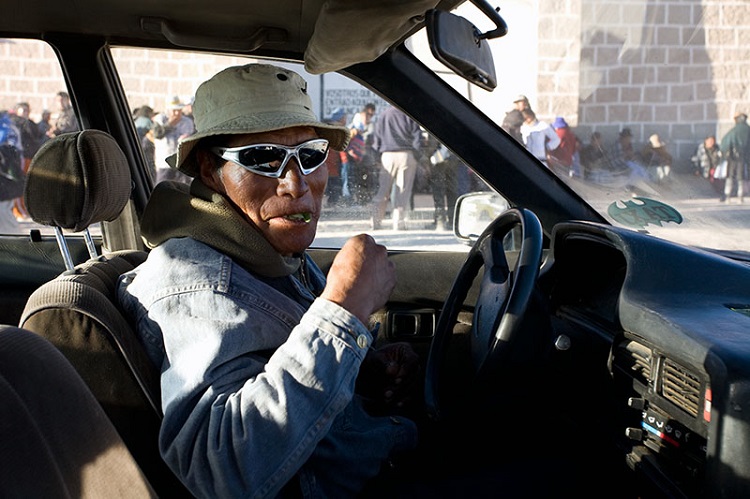
Photo Credit: Szymon Kochański
Cable Car
An urban cable care system (“teleferico”) constructed in La Paz has taken transport in Bolivia to a whole new level. Operating at 4000 m (13,000 ft) above sea level, the highest cable car in the world connects La Paz to neighboring El Alto. This mode of transport provides stunning views of the city and also ensures access from the poorer neighborhoods to the central downtown area. The cable car system consists of three lines, colored red, yellow and green in line with Bolivia’s flag and is able to transport 3000 passengers per hour between the two cities, in just 10 minutes (currently land transport between the two cities takes approximately 1hr).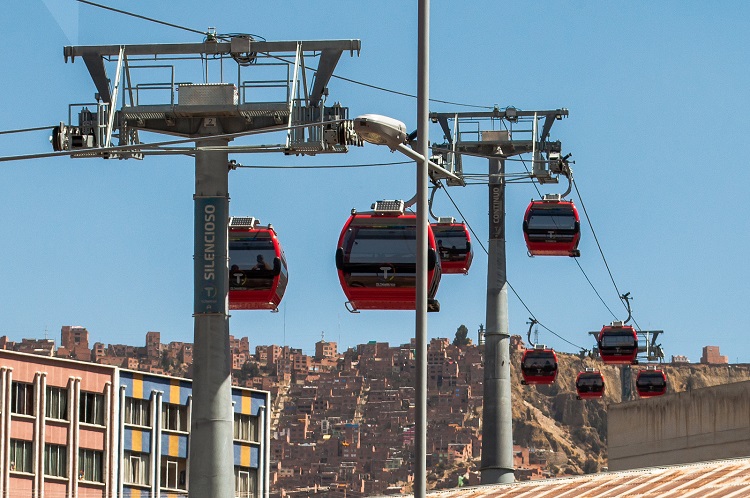
Photo Credit: David Almeida
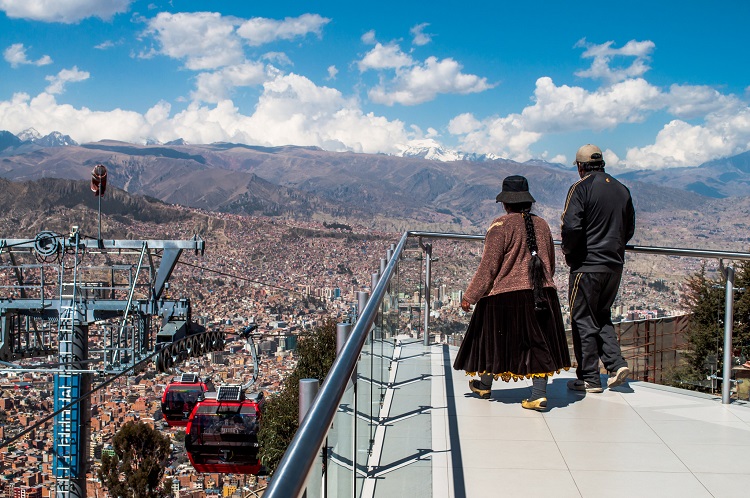
Photo Credit: David Almeida
Flying
The main reason to fly within Bolivia is to cover large distances in the least amount of time possible. Tropical and rural areas in particular can be difficult to reach via bus so taking a plane is often the most sensible option. Boliviana de Aviacion (BoA) is Bolivia’s nationally-owned airline making more than 70 flights per day to a growing number of Bolivian and international destinations. Internal flights cost anywhere between Bs 350 ($50 US) and Bs 700 ($100 US) for a one way ticket and baggage allowance is usually 15 kg per passenger. Experiencing the stunning views over Bolivia’s vast and mysterious jungle, makes flying to the Amazon the preferred option to taking the boat. Flights are largely operated by Amazonas, serving La Paz, Cochabamba and Santa Cruz. Unfortunately flight times are limited and delays/cancellations are common so it’s best to book a few days in advance and to reconfirm the day before departure.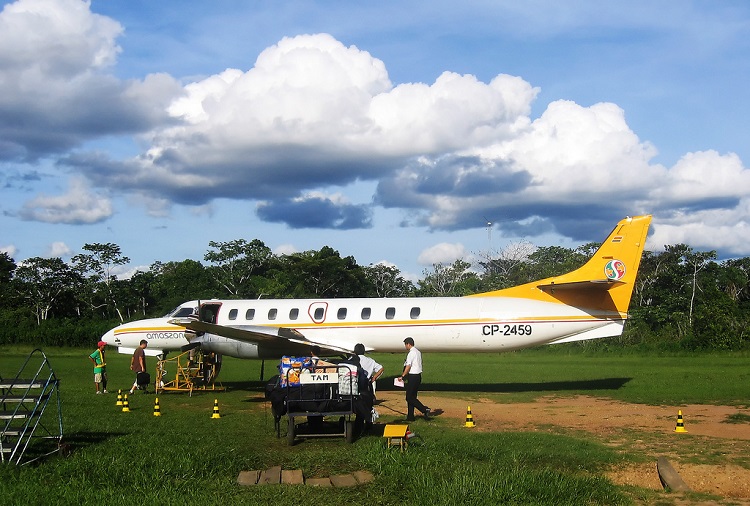
Photo Credit: Magnus von Koeller
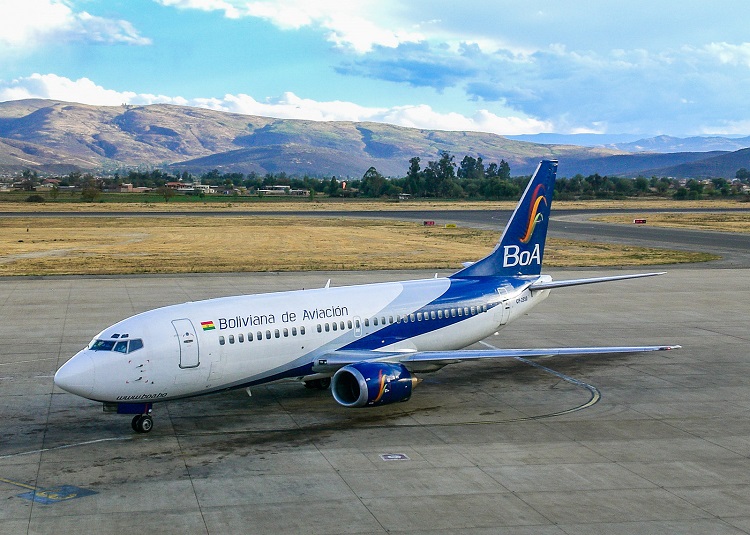
Photo Credit: Ruimc77
Trains
Once the height of luxury in Bolivia, train travel is now one of the least popular modes of transport in the country. Today there are two separate networks operating in Bolivia: Ferroviaria Oriental – Eastern network running two lines from Santa Cruz; one to the Brazilian border at Quijarro; the other south to Yacuiba in the Chaco on the Argentine border. The scenery on this train route is fairly uninspiring, therefore it’s recommended to bring along some form of entertainment to stave off boredom. Empresa Ferroviaria Andina (or Occidental) – Western network running passenger trains from Oruro, south across the Altiplano via Uyuni and Tupiza to Villazón on the Argentine border. From Uyuni, a weekly passenger train runs southeast to Calama in Chile. The scenery on both these routes is breathtaking, making it a great alternative to taking the bumpy bus ride between La Paz and Uyuni. The company also runs a scenic route between Sucre and Potosí.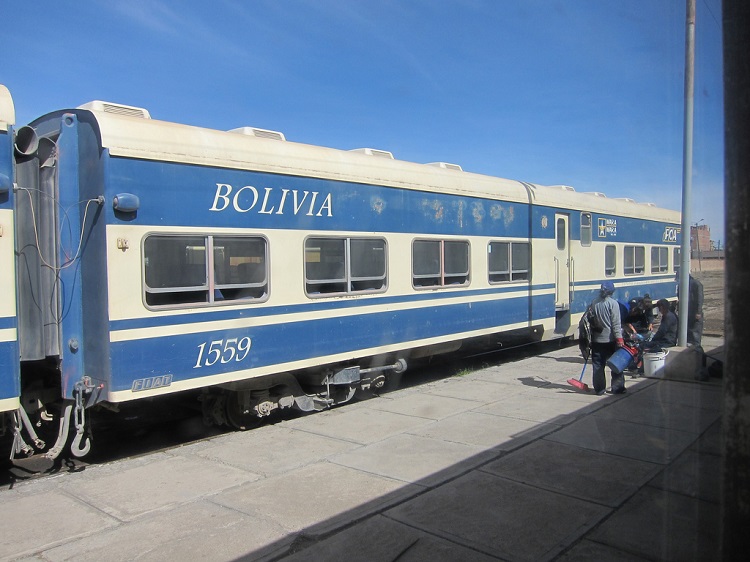
Photo Credit: Fabulousfabs
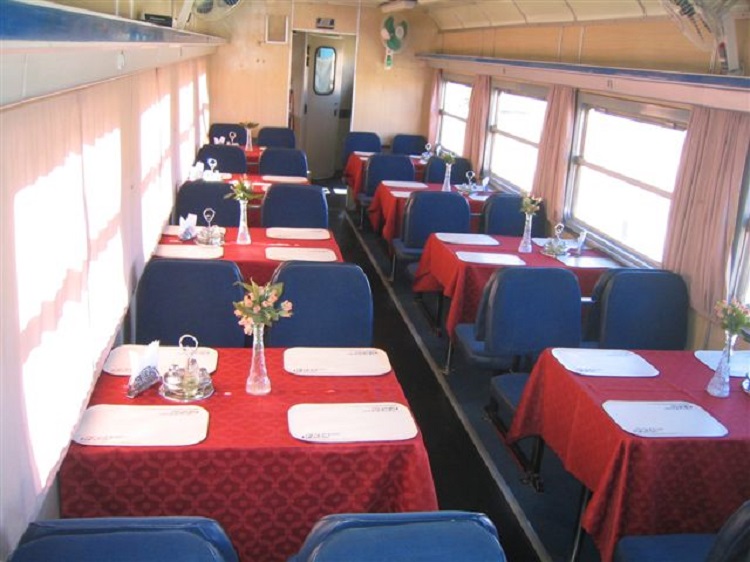
Driving
Due to the poor road conditions between Bolivia’s main tourist attractions, traversing the country by car is not highly recommended. While hiring a private driver for the day is a much easier/safer option, for those desperate to visit some out-of-the-way destinations, renting a car from a local company is possible. You won’t find many of the major international car rental companies in Bolivia, however there are a number of local rental companies to choose from in all the major cities. You’ll need to be over 25 to rent a car and expect to pay between Bs 420–700 ($60 –100 US) per day for a four-wheel-drive which is essential to navigating Bolivia’s unpaved roads. Insurance can be arranged through most of the rental companies, however make sure to read the small print carefully.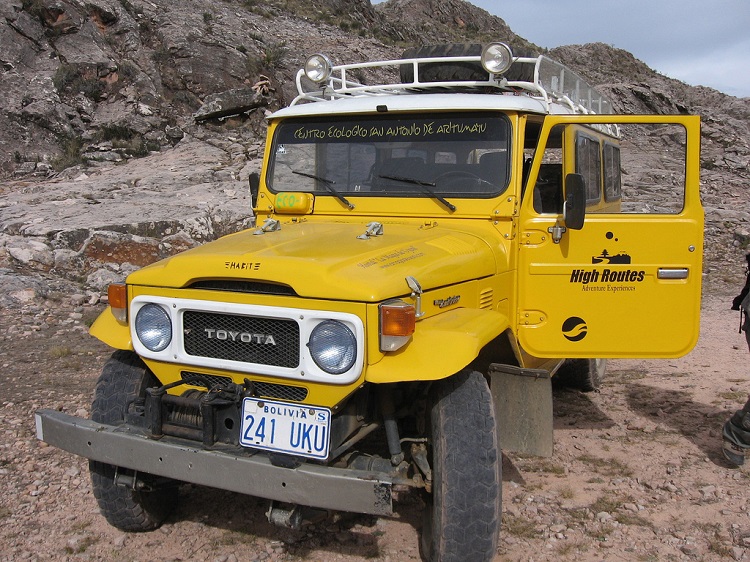
Photo Credit: Josie
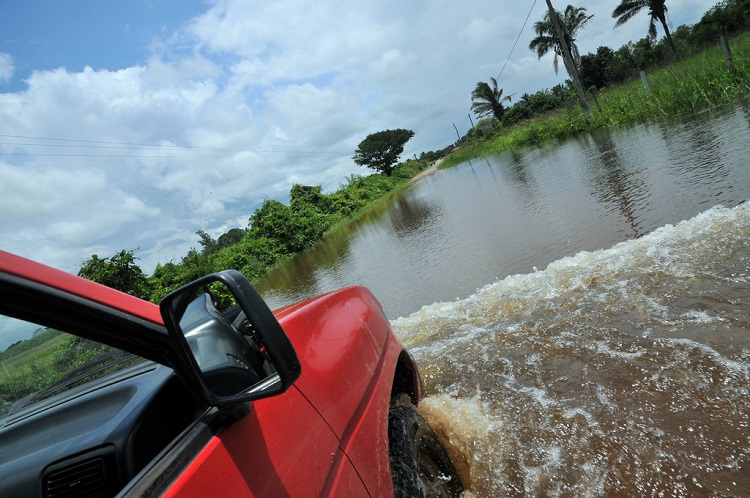
Photo Credit: CIAT
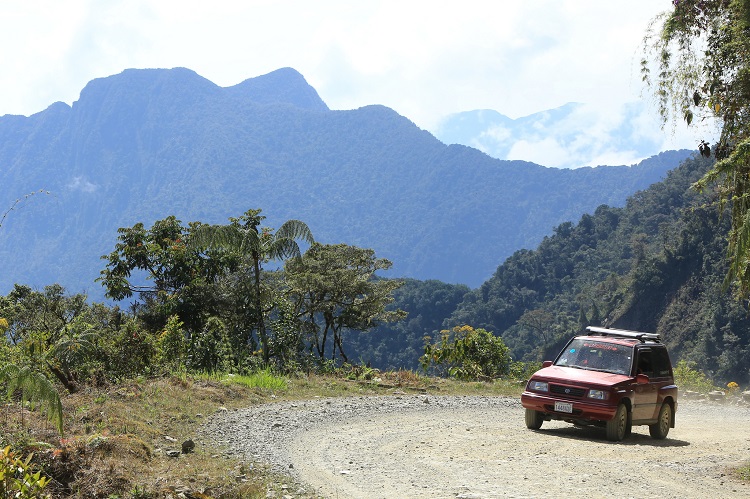
Photo Credit: Ngaire Hart
Travel Routes
All of Bolivia’s major cities and towns are connected by public transport. The following links and table provide information on the different routes and travel options between the most popular travel destinations in the country:- Traveling between Copacabana and La Paz
- Traveling between Uyuni and La Paz
- Traveling between Uyuni and Sucre
- Traveling between Potosi and Sucre
- Traveling between La Paz and Sucre (via Potosi)
- Traveling between Santa Cruz and Sucre
- Traveling between Santa Cruz and La Paz
| Bus Route | Frequency | Time (hrs) | Distance (kms) | Price ($US) |
|---|---|---|---|---|
| La Paz to Oruro | Daily / Every 1/2 hour | 3 | 225 | 5 |
| La Paz to Sucre | Daily / Evenings only | 14 | 500 | 15 |
| La Paz to Copacabana | Daily / Every few hours | 3.5 | 165 | 2 |
| La Paz to Tiwanaku | Daily / Every few hours | 2 | 60 | 4 |
| La Paz to Potosi | Daily / Evening only | 7 | 550 | 12 |
| La Paz to Cochabamba | Daily / Morning and Evening | 6 | 350 | 10 |
| La Paz to Coroico | Daily | 4 | 90 | 2 |
| Potosi to Villazon | Daily | 12 | 360 | 11 |
| Potosi to Sucre | Daily / Every few hours | 3 | 165 | 4 |
| Potosi to Uyuni | Daily / Morning and evening | 8 | 210 | 6 |
| Potosi to Tupiza | Daily / Mornings only | 8 | 300 | 4 |
| Sucre to Cochabamba | Daily / Evenings only | 12 | 280 | 10 |
| Sucre to Tarabuco | Daily / Sunday for the market | 1 | 55 | 1 |
| Santa Cruz to Yacuiba | Daily | 10 | 550 | 12 |
| Santa Cruz to Cochabamba | Daily / Morning and evening | 8 | 445 | 10 |
| Santa Cruz to Trinidad | Daily / Morning and evening | 8.5 | 550 | 4 |
| Oruro to Uyuni | Daily / Evenings only | 7 | 310 | 5 |
| Villazon to Tupiza | Daily | 3 | 85 | 2 |
| Rurrenbaque to Trinidad | Thursdays & Saturdays | 18 | 360 | 18 |
Safety Tips
- When taking public transport, safeguard valuables by keeping them on your body at all times. If you do have to stow your bag in the luggage compartment, pack all your main valuables into a separate day pack and bring this onto the bus with you
- Always padlock your bag as this is a huge deterrent for would-be thieves. If you take an overnight bus, try to padlock your bag to a seat or luggage rack, so if you do fall asleep, no one can run off with your bag
- Unfortunately drunk driving does occur in Bolivia, so make sure to assess the state of your driver before getting on the bus
- On longer bus journeys make sure to pack enough water and snacks to last the distance as stops can be far and few between. Also make sure to bring spare toilet paper and hand sanitizer as toilets in bus terminals aren’t always well serviced
- If traveling alone at night, it’s advisable to call a taxi instead of hailing one in the street; ask your hotel, bar or restaurant to call one for you
- Always be alert when hanging around bus terminals or bus stops as this is prime ground for opportunistic pickpockets and bag snatchers
- If your bus has a seat-belt, wear it, as this could mean the difference between life and death if an accident does occur
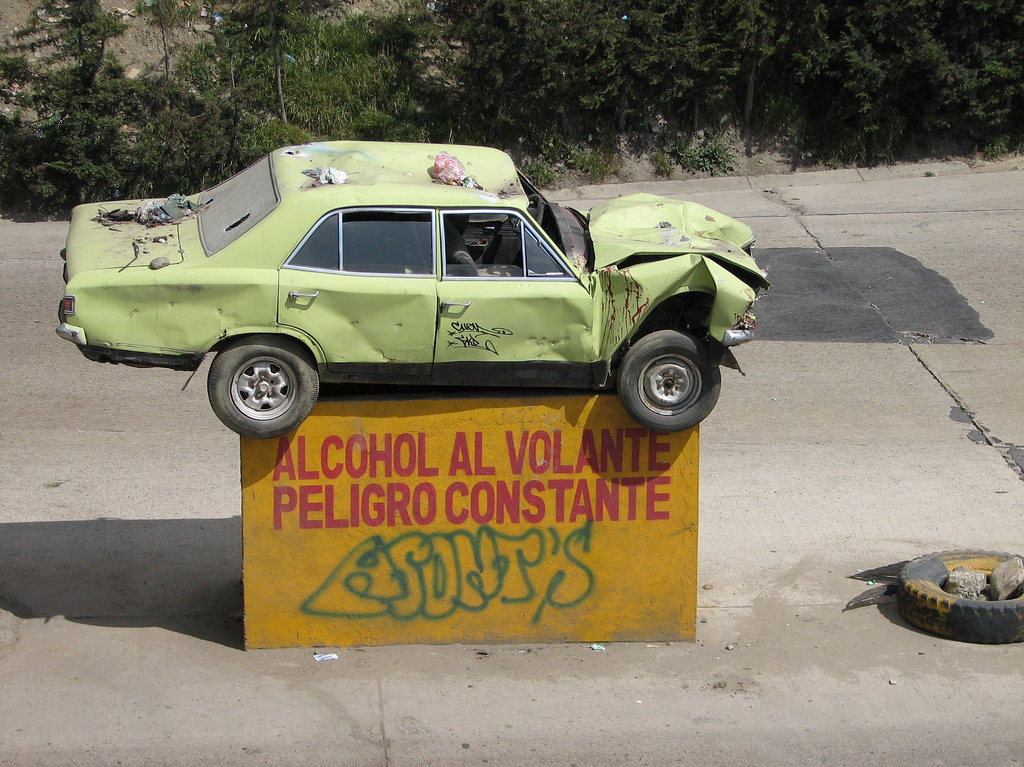
Photo Credit: David Fisher

